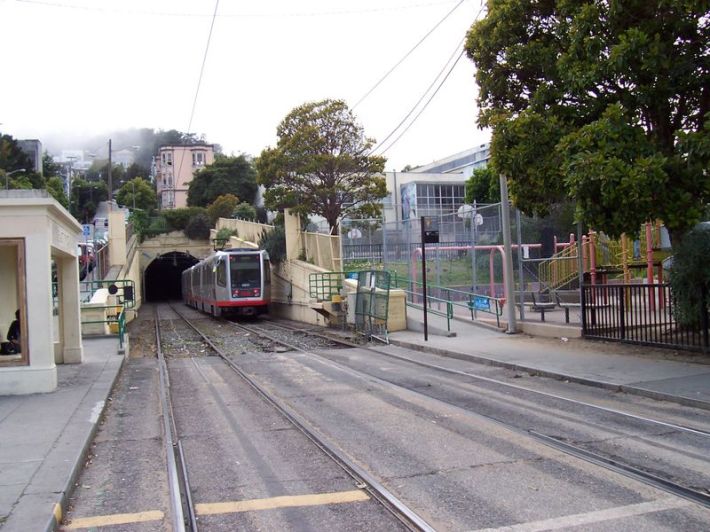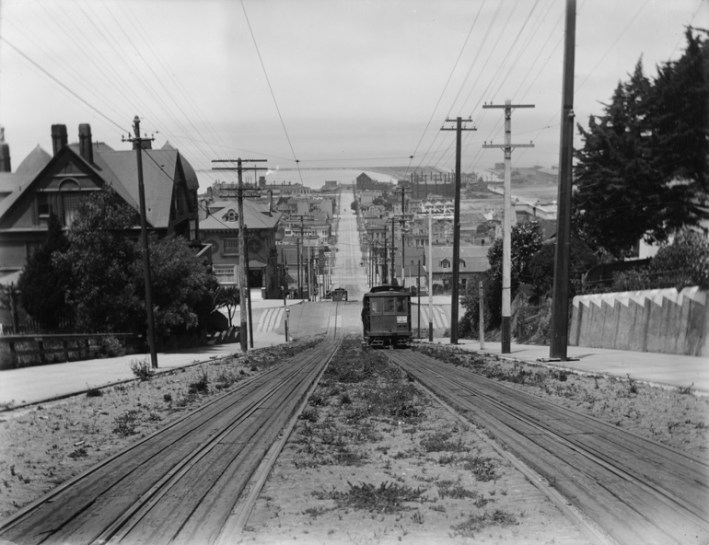Note: GJEL Accident Attorneys regularly sponsors coverage on Streetsblog San Francisco and Streetsblog California. Unless noted in the story, GJEL Accident Attorneys is not consulted for the content or editorial direction of the sponsored content.
Look at the lead image. Who wouldn't want something like that in their city? (See note at end.)
Privately owned automobiles will be banned on Market Street from 10th to Main later this month. Approving this plan, of course, will be remembered as a seminal moment. The city also removed cars from Octavia, between Hayes and Linden late last year. And it is on track to expand its miles of protected bike lanes.
But perhaps these developments, welcome as they are, miss a larger point--and a greater possibility for the spaces between buildings. Advocate Patrick Traughber brought this question to light as part of a twitter exchange:
Imagining SF light rail streets with only grass and sidewalks for walking and biking instead of only asphalt for cars and trucks. https://t.co/jNnzugTdNE pic.twitter.com/luVX431EzP
— Patrick Traughber (@ptraughber) January 1, 2020
Here's another idea derived from the twitter exchange: what if the grass of Duboce Park extended across the N Judah tracks? Might that cut down the number of motorists who drive into the Sunset tunnel?

Jason Henderson, geography professor at San Francisco State, writer of the book Street Fight: The Struggle over Urban Mobility in San Francisco, and a Streetsblog contributor, brings up another possible use for the asphalt-coated land between buildings--in a city with big hills, why not modern funiculars?
And if that seems far-fetched, San Francisco used to have them. Although the image below looks like it features a cable-car line, that's actually a funicular:

Unfortunately, every conversation about safety on our streets typically starts from the paradigm that asphalt is the default material. Then it's how do we protect bikes and pedestrians from motorists who drive on it? What about resistance to giving up free car storage (aka parking)? How do we carve out room for transit?
Maybe those are all the wrong questions. Placing huge swaths of asphalt between buildings is a practice to accommodate cars. Perhaps, as we enter a new decade, we should be taking asphalt itself out of the equation, transforming space between buildings into something else entirely?
In other words, maybe not every street--at least the way we currently think of them--has to be a 'street' in the first place.
Tell us what you think below.
Note: who would be against it? The pettifogger who brought you the 2010 bike plan injunction of course, now busy trying to jam up the Page Street project.






